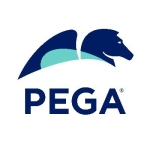What is our primary use case?
Informatica MDM is a multi-domain product for any master data management. We could use it for customer master data management or supplier data. Given the nature of the business, we can apply Informatica MDM to master the core data entities within an organization.
What is most valuable?
Informatica MDM has a defined data model we can customize with user and developer options. The solution's user interface allows users to work with the master data model. Another feature I like is that the solution can integrate with various data cleansing engines, such as address cleansing or data quality-related packages or functionalities.
What needs improvement?
From a data or master data management perspective, the solution is pretty evolved. But from a business process automation workflow standpoint, it could be a bit more intuitive, rather than technically complex, such as in workflow alteration using ActiveVOS. The solution also needs adaptive rules elaborating AI/ML technologies.
For how long have I used the solution?
I have been working with Informatica MDM for ten years now.
What do I think about the stability of the solution?
The solution is robust and stable enough.
What do I think about the scalability of the solution?
With master data, we don't usually talk about tons of data. There could be a lot of records, but then it's not that huge. Now that Informatica is shifting towards the cloud as part of their software, they would have considered the scalability perspective, which is not too huge. Like transactional databases, we would expect less data there. The solution is mature enough to cater to a wide range of users.
How are customer service and support?
We have a huge dependency on support all the time. If something is required or unclear or doesn't work, we have to raise a ticket and follow a process to resolve it. The turnaround time is long sometimes.
Even for simpler questions, we still have to be put on hold and wait for someone to pick up and respond. Even if the problem is critical, support does not treat it with the same urgency we would anticipate or expect.
How would you rate customer service and support?
How was the initial setup?
One would need professional services from Informatica to get MDM installed, and there has to be a contract with professionals all the time after that to manage the data model and any changes to the data. Moreover, there is a huge dependency on their professional services to work with the product in the long-term perspective.
The setup is not complex for professionals, but people without a technical background would not be able to set up the solution by themselves.
Once the installations are complete, there are two aspects to the solution. One is the back-end, which is the model, then setting up integration to load the data and configuring the MDM system to perform its master data capability. The other part is the front end, which is deploying the user interfaces and ensuring the user roles are defined and set up.
When deploying the solution, the whole project team needs to be around because the developers, the users, and everybody on the project team must come together because once it is deployed, it needs to be tested. Maintenance teams would be separate. They need to focus on any minor enhancements to the solution and provide support with any bugs, issues, or questions users might have with the data.
What's my experience with pricing, setup cost, and licensing?
I have heard from customers that the product comes with a huge license cost. Under contractual terms, Informatica does not let us have full control of our own datasets, but that comes down to how the billing and licensing work. The licensing is a bit complex and expensive.
Which other solutions did I evaluate?
I have experience working with Informatica MDM. However, I have been comparing it against MS MDS to see how each stands. More from a costing perspective, a licensing standpoint, or any roadmap from a product's perspective, for which MS MDS has no plans to expand or evolve to a newer product with more capabilities. That's something I am checking in the background. Given the current landscape in my organization, both tools coexist, but we are trying to see if we need to replace one with the other.
What other advice do I have?
At the moment, Informatica is the market leader within the MDM space, expanding into the latest data integration and management advancements. I don't see MS MDS in these areas. But then again, MS MDS has been treated as a legacy system within the organization, and we're trying to find a roadmap to replace it with Informatica by understanding what it offers comparatively.
The solution is pretty evolved from an MDM perspective, and it seamlessly integrates with its product suite.
We work with the on-prem version. We have seen the cloud version, but we're not there yet because it takes a long time to onboard all the businesses onto the cloud. The cloud version is still at a proof of concept stage.
Before purchasing the solution, the user must understand the licensing and cost structure, as well as their professional support. All these aspects are important on an ongoing basis. Depending on the wide suite of products they offer, it's best to understand which products would suffice the business needs rather than having to roll out a full-blown MDM solution, which is not the case with all the clients.
I rate the product a seven out of ten.
Disclosure: My company has a business relationship with this vendor other than being a customer. Integrator


















